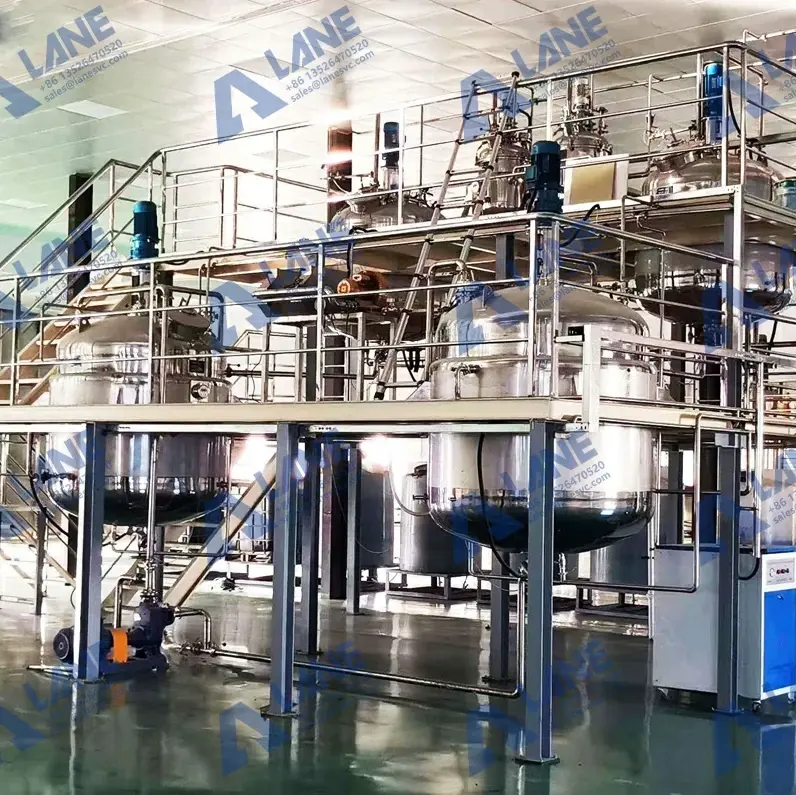Liquid Fertilizer Manufacturing Equipment for Sustainable Agriculture
- Nancy Ju
- Sep 8
- 3 min read
Liquid fertilizer manufacturing equipment is the backbone of modern liquid fertilizer production, ensuring that raw materials such as urea, phosphate, potash or organic extracts are processed into uniform, stable and nutrient-rich liquid formulations. With the continuous growth in demand for precision agriculture and irrigation systems, the global fertilizer market is rapidly shifting towards liquid fertilizers.

The function of liquid fertilizer manufacturing equipment is not merely to mix raw materials; it also integrates batching, dissolving, homogenizing and packaging into a streamlined production line. Whether it is a large factory or a small agricultural cooperative, having reliable equipment is crucial for ensuring consistent quality, efficiency and safety.
Why Liquid Fertilizer Manufacturing Equipment Is Essential
Consistency: Guarantees stable nutrient concentration across every batch.
Efficiency: Reduces manual labor and speeds up production cycles.
Scalability: Adaptable to different production capacities, from 1,000 L/day to industrial-scale plants.
Flexibility: Handles both inorganic salts and organic additives such as fish protein or yeast extract.
Market Competitiveness: Enables producers to meet growing global demand for liquid fertilizers.
Without proper liquid fertilizer manufacturing equipment, producers face challenges such as sedimentation, nutrient imbalance, and inconsistent product quality.
Process Flow of Liquid Fertilizer Manufacturing
The production of liquid fertilizers requires careful control at each stage to ensure that nutrients remain soluble, stable, and evenly distributed. With modern liquid fertilizer manufacturing equipment, the workflow becomes streamlined and highly efficient.
1. Raw Material Preparation
Key nutrient sources such as urea, potassium nitrate, ammonium phosphate, or organic extracts (like fish protein or molasses) are weighed precisely before feeding into the raw material mixing tank. Heating jackets or high-speed agitators may be used to dissolve crystalline fertilizers quickly and completely.
2. Bulk Mixing and Dissolution
Once dissolved, the materials are transferred into the main mixing tank, where continuous agitation prevents sedimentation. At this stage, large batches are blended until the solution is uniform. Advanced mixers may also include automatic sensors for temperature and pH to maintain optimal conditions.
3. Additive Dosing
Specialized nutrients such as chelated micronutrients, stabilizers, or biostimulants are incorporated via an additive mixing tank or an automated dosing pump. This ensures that trace ingredients are added in the right quantities and at the right time, preserving their stability and effectiveness.
4. Homogenization and pH Adjustment
The blended solution undergoes recirculation to achieve complete homogenization. pH regulators are added if necessary to improve storage stability and compatibility with fertigation systems. This step ensures that the liquid fertilizer will not precipitate during application.
5. Filtration and Quality Control
To prevent clogging in irrigation systems, the solution passes through industrial dual filter that remove undissolved particles or impurities. Samples are taken for quality checks, ensuring consistency in nutrient concentration and clarity.
6. Storage and Packaging
Finally, the liquid fertilizer is directed into stainless steel storage tanks or directly to automatic filling systems. The product may be packaged into bottles, drums, or IBC tanks depending on market requirements. Modern filling lines can be fully automated, with labeling, sealing, and coding integrated into the process.

Case Example 1: India’s Fertigation Supply Plant
In Maharashtra, India, a cooperative of vegetable growers invested in a liquid fertilizer manufacturing line. By using LANE’s raw material mixing tanks and automated filling units, the cooperative produced customized nutrient solutions for drip irrigation. The system reduced fertilizer waste by 20% and boosted yields by 15%, proving the effectiveness of well-designed liquid fertilizer manufacturing equipment.
Case Example 2: Brazil’s Sugarcane Byproduct Utilization
A Brazilian sugar refinery sought to recycle molasses and vinasse into value-added fertilizer. With LANE’s liquid fertilizer manufacturing equipment, the byproducts were processed into stable liquid fertilizers enriched with potassium. The product was applied directly to sugarcane fields, improving yields and reducing environmental discharge costs.

Frequently Asked Questions
Q1: What capacity ranges are available for liquid fertilizer manufacturing equipment?
Systems range from 500 L/day for small farms to 50,000 L/day for industrial plants.
Q2: Can organic raw materials be processed?
Yes. Equipment can handle fish protein hydrolysates, molasses extracts, and yeast-based products.
Q3: How is product quality maintained?
Through PLC control systems, pH monitoring, and filtration units that ensure stability.
Q4: Can the equipment be automated?
Yes. LANE offers fully automated systems with remote monitoring.
Q5: Is the equipment suitable for fertigation and foliar sprays?
Yes. The production line can create formulations for multiple agricultural applications.
Liquid fertilizer manufacturing equipment is vital for producing high-quality, consistent, and scalable liquid fertilizers. From raw material preparation to final packaging, each stage requires reliable equipment to ensure efficiency and profitability.
LANE’s expertise in designing and delivering liquid fertilizer manufacturing equipment enables clients worldwide to meet growing agricultural demands while embracing sustainable practices. With turnkey solutions and global service, LANE ensures that producers achieve long-term success in liquid fertilizer production.
Email: sales@lanesvc.com
Contact number: +86 13526470520
Whatsapp: +86 13526470520






Comments